Filter by
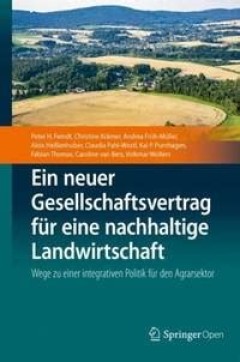
Ein neuer Gesellschaftsvertrag für eine nachhaltige Landwirtschaft = Wege zu…
Die Landwirtschaft in Deutschland, Europa und weltweit befindet sich in einem dramatischen Umbruchprozess. Einerseits bieten Liberalisierung und Marktöffnung, neue technologische Entwicklungen, die wachsende Weltbevölkerung und neue Kundenwünsche vielen landwirtschaftlichen Betrieben neue Möglichkeiten. Andererseits stehen viele Landwirtinnen und Landwirte in internationaler Konkurrenz, sin…
- Edition
- 1
- ISBN/ISSN
- 9783662586563
- Collation
- XX, 323 hlm; ill., lamp.,
- Series Title
- -
- Call Number
- -
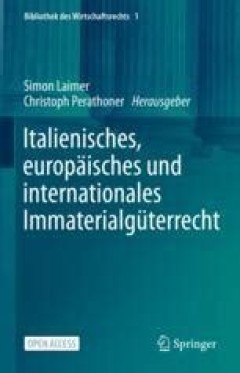
Italienisches, europäisches und internationales Immaterialgüterrecht
Dieser Open Access Band bietet sowohl deutsch- als auch italienischsprachige Beiträge zu wesentlichen Bereichen des gewerblichen Rechtsschutzes und des Urheberrechts aus der Sicht des deutschen, italienischen und österreichischen Rechts sowie zum TRIPS-Abkommen samt einem Blick auf das vorläufig in Kraft getretene Handelsabkommen zwischen Kanada und der Europäischen Union (CETA). Ein Schwer…
- Edition
- 1
- ISBN/ISSN
- 9783662621790
- Collation
- IX, 254 hlm; ill., lamp.,
- Series Title
- 1
- Call Number
- -

Combatting Illicit Trade on the EU Border = A Comparative Perspective
This open access book provides the first-ever comparative study on criminal policy concerning the illicit trade of tobacco, conducted among four comparatively new EU Member States (Lithuania, Poland, Slovakia and Romania) and two “old” EU countries (Germany and Italy). The book addresses the national legal frameworks, current criminological situation regarding illicit trade of tobacco, and …
- Edition
- 1
- ISBN/ISSN
- 9783030510190
- Collation
- VIII, 283 hlm; ill., lamp.,
- Series Title
- -
- Call Number
- -

A Topos Subverted = Italy in the 20th and 21st century German literary imagin…
What has become of the literary topos “Italy”—once so central to German literature—in the 20th and early 21st centuries? Does it still have a role to play in the German self-understanding and in what way has this role changed? To address these questions, this study focusses on six texts. Each text revises, subverts, and radicalises this literary topos such that it gains new contemporary…
- Edition
- 1
- ISBN/ISSN
- 9783503238064
- Collation
- 182 hlm; ill., lamp.,
- Series Title
- 15
- Call Number
- -
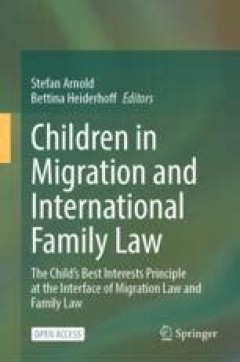
Children in Migration and International Family Law = The Child’s Best Inter…
This open access book offers readers a better understanding of the legal situation of children and families migrating to the EU. Shedding light on the legal, practical, and political difficulties at the intersection of international family law and migration law, it demonstrates that enhanced coordination between these policy areas is crucial to improving the legal situation of families on the m…
- Edition
- 1
- ISBN/ISSN
- 9783031715983
- Collation
- X, 323 hlm; ill., lamp.,
- Series Title
- -
- Call Number
- -
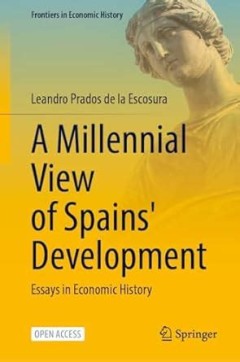
A Millennial View of Spain’s Development = Essays in Economic History
This open access book presents the evolution of the Spanish economy over the past seven centuries since the end of the Reconquest and examines how much economic progress has Spain achieved, as well as its impact on living standards and income distribution over the very long run. It shows that preindustrial Spain was far from stagnant, although levels of output per head in the early nineteenth c…
- Edition
- 1
- ISBN/ISSN
- 9783031607929
- Collation
- XXXII, 375 hlm; ill., lamp.,
- Series Title
- -
- Call Number
- -
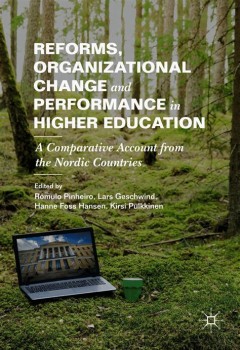
Reforms, Organizational Change and Performance in Higher Education = A Compar…
This open access book investigates the effects of changes in leadership and managerial structures of Nordic universities resulting from reforms in the last decade. It builds on a rich, comparative dataset across a multiplicity of system-wide (macro) and organisational (meso and micro) dimensions, namely: reform or policy initiatives; drivers, aims, instruments and actors; structural changes wit…
- Edition
- 1
- ISBN/ISSN
- 9783030117382
- Collation
- XX, 326 ill; lamp
- Series Title
- -
- Call Number
- -
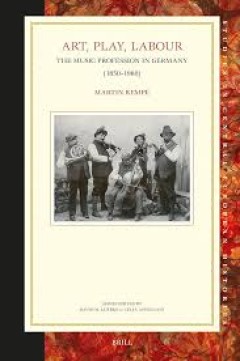
Art, Play, Labour: the Music Profession in Germany (1850–1960)
Germany is considered a lauded land of music: outstanding composers, celebrated performers and famous orchestras exert great international appeal. Since the 19th century, the foundation of this reputation has been the broad mass of musicians who sat in orchestra pits, played in ensembles for dances or provided the musical background in silent movie theatres. Martin Rempe traces their lives and …
- Edition
- Volume: 73
- ISBN/ISSN
- 78-90-04-54272-3
- Collation
- -
- Series Title
- -
- Call Number
- -

Development in Turbulent Times = The Many Faces of Inequality Within Europe
This open access book explores the most recent trends in the EU in terms of development, progress, and performance. Ten years after the 2008 economic crisis, and amidst a digital revolution that is intensifying the development race, the European Union, and especially Central and Eastern Europe, are ardently searching for their development priorities. Against this background, by relying on a cr…
- Edition
- 1
- ISBN/ISSN
- 9783030113612
- Collation
- VIII, 197 ill; lamp
- Series Title
- -
- Call Number
- -

Vulnerability in Scandinavian Art and Culture
In this open access book, seventeen scholars discuss how contemporary Scandinavian art and media have become important arenas to articulate and stage various forms of vulnerability in the Scandinavian welfare states. How do discourses of privilege and vulnerability coexist and interact in Scandinavia? How do the Scandinavian countries respond to vulnerability given increased migration? How is v…
- Edition
- 1
- ISBN/ISSN
- 9783030373825
- Collation
- XVII, 324 hlm; ill., lamp.,
- Series Title
- -
- Call Number
- -
 Computer Science, Information & General Works
Computer Science, Information & General Works  Philosophy & Psychology
Philosophy & Psychology  Religion
Religion  Social Sciences
Social Sciences  Language
Language  Pure Science
Pure Science  Applied Sciences
Applied Sciences  Art & Recreation
Art & Recreation  Literature
Literature  History & Geography
History & Geography